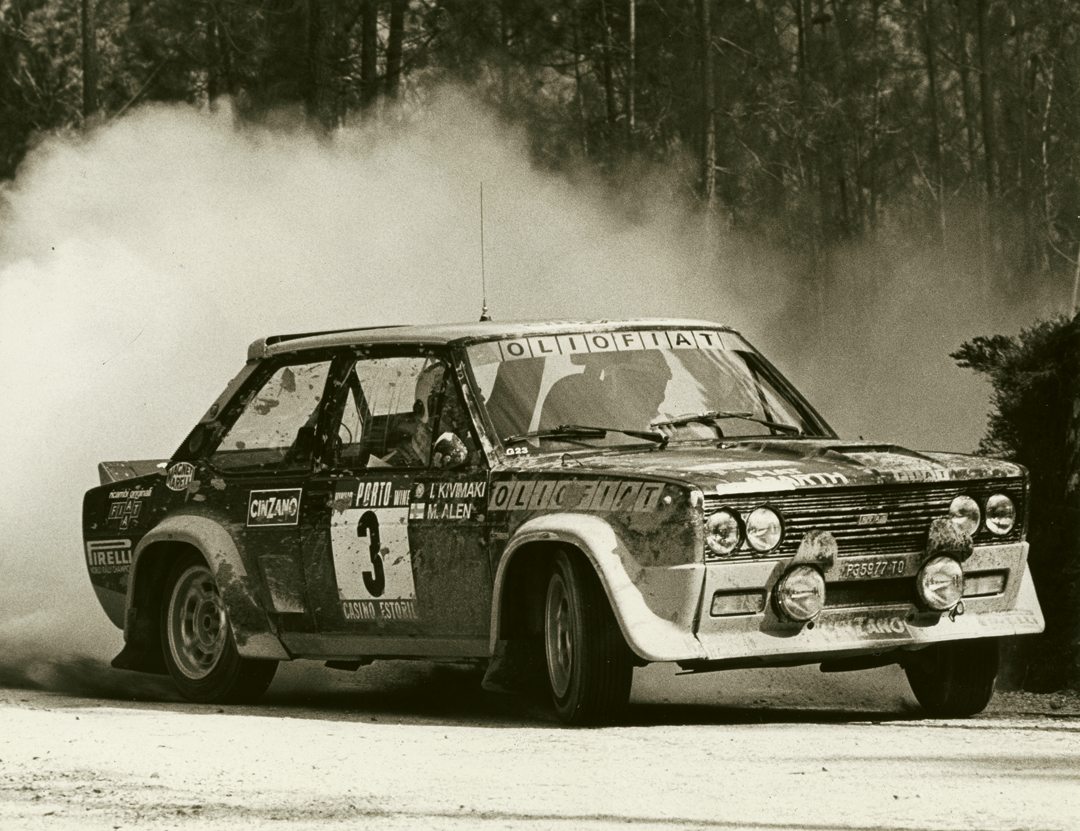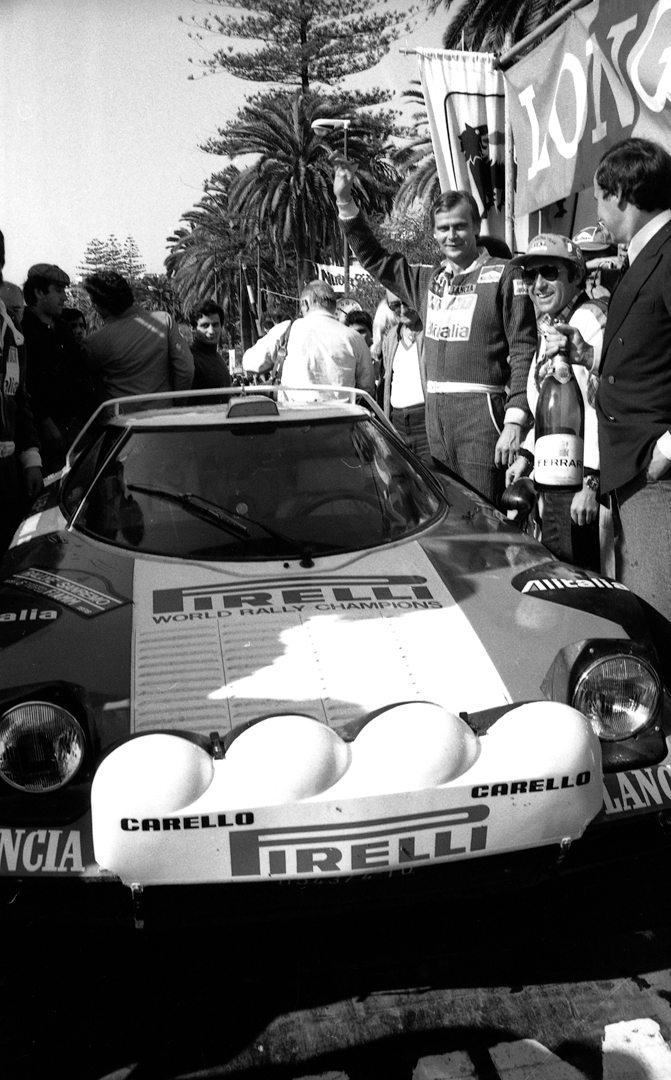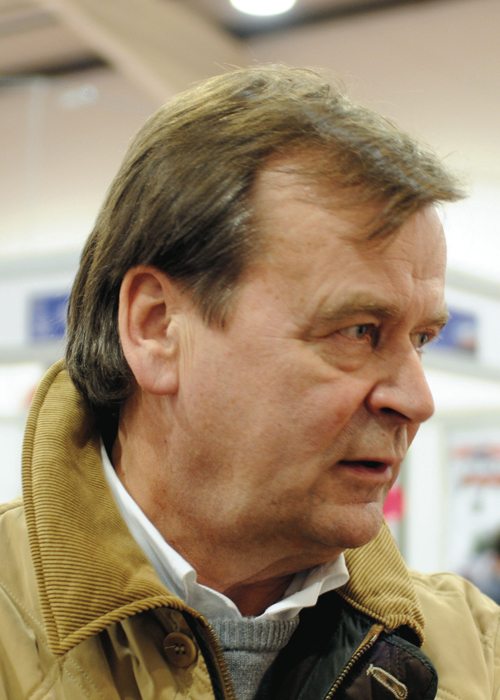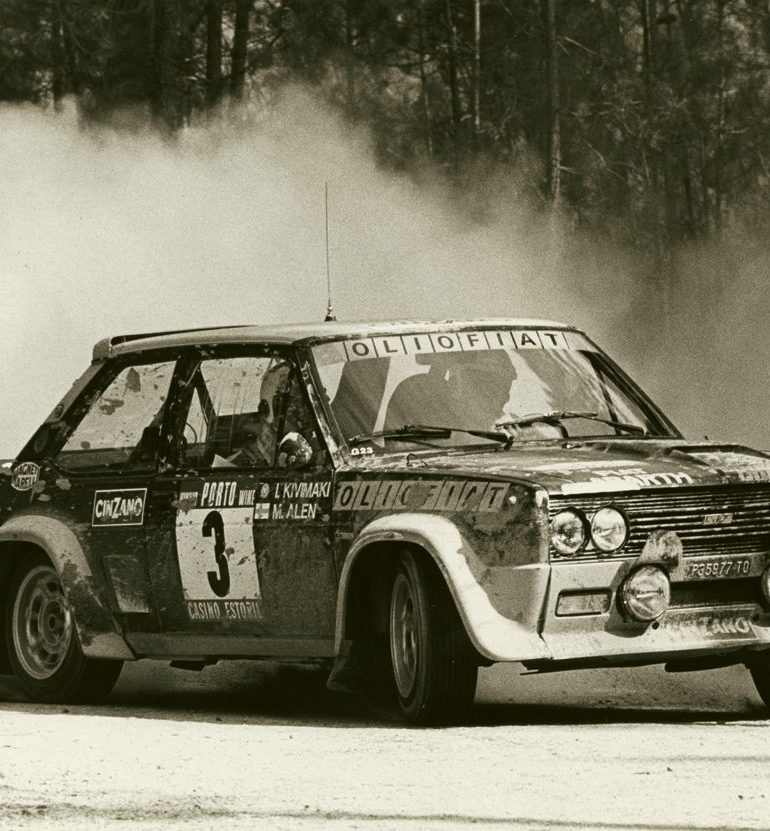Markku Alén is the person-ification of his favorite rallying expression: maximum attack. Words he lived by throughout his illustrious career, firmly establishing himself as one of the world’s greatest rally drivers.
Markku was World Champion in 1978, the last year of the FIA Cup, and ruled the rally world again in 1986, but only for a lousy 10 days. The title was taken away from him by FISA, the sport’s world governing body, after a disgraceful display of jingoism, confusion and rancor by the Italians during the year’s San Remo Rally. He won 19 World Championship rallies, including a staggering six victories in the rollercoaster 1000 Lakes, Finland’s world title counter.

Tall and slim, Helsinki-born Alén started young. At 18 he won the 1969 Finnish junior rally championship in a Renault Gordini R8. Next, he went ice racing and became champion of Finland at that in a Sunbeam 900. In 1971, Markku won 11 Finnish national rallies in a cumbersome Volvo 142.
At just 21, he entered Britain’s notoriously slippery ice, mud and snow RAC Rally in the unwieldy Volvo. He hustled the heavy Swedish car into 12th place overall with a potent cocktail that would serve him well throughout his career: guts, talent and will power.
Ford was first to take Alén on in 1973, when he did the RAC for them in a 1798-cc, 210 hp Escort RS 1600, finishing 3rd. The talent scouts were out in force to watch him, but the Fiat Group got him in the end. They signed Alén to a contract that ran for more or less the rest of his rally career.
First, Markku campaigned the rather outdated 210 hp Fiat Abarth 124 Rallye: he took it to 3rd in the 1974 TAP Rally of Portugal, 2nd in Michigan’s 1974 Press on Regardless, won the 1975 Rally of Portugal and came 3rd in that year’s Monte Carlo.
The 124’s successor was the legendary Fiat 131 Abarth, a boxy 16-valve, 1995-cc rally version of the Turin manufacturer’s big-selling production sedan. The car would win the 1977, 1978 and 1980 World Rally Championship for Manufacturers and spur Markku Alén on to winning the 1978 FIA Cup. Between 1975 and mid-1981, the young Flying Finn won his own country’s round in the World Championship, the 1000 Lakes, no less than four times and the Portugal three times in the 131, before encroaching on Sandro Munari’s territory to win the 1978 San Remo Rally in the fabled Lancia Stratos. But for 1979, 1980 and 1981 he went back to the 131 and won the 1000 Lakes again in ’79 and ’80, as well as the ’81 Rally of Portugal.
The sublime Stratos and down to earth 131 would be hard acts to follow, but Lancia did it with the Pininfarina-styled 037.
After coming 2nd in the 037 on the 1983 Rallye Monte Carlo, Markku won the Tour de Corse in the car and followed that with a 2nd in the Acropolis, but he would have to wait until the end of the year for another victory, in the San Remo Rally. He added Tour de Corse to his tally again in 1984.
In 1985, the leading World Rally Championship teams were putting the finishing touches to the most powerful cars the sport had ever seen: the Group Bs. Lancia debuted its new supercharged, turbocharged 450 hp Group B Delta S4 in the ’85 RAC Rally, where it came 1st driven by Henri Toivonen and 2nd by Alén.
The full Group B season happened in 1986, which was also the year of its demise. The cars were just too powerful to be let loose on narrow public roads and forestry tracks.

Photo: Pirelli
Tragedy struck at the 1986 Rally of Portugal in March, when three spectators were killed as a Ford RS200 driven by local driver Joaquim Santos plunged into the crowd. The last straw was the death of two of the sport’s most popular figures, Henri Toivonen and Sergio Cresto, when their Delta S4 inexplicably flew off a narrow Corsican road, crashed and exploded while leading the rally. Within hours, FISA’s president, Jean-Marie Balestre, announced the end of Group B.
Then came the San Remo disaster in October, Round 11 of the World Championship. With three more events to go, the constructors championship was headed by Peugeot with 131 points, with Lancia lying 2nd at 119. The drivers table told a similar story: Peugeot’s Juha Kankkunen was 1st with 91 points and Lancia’s Markku Alén 2nd on 69.
The event was a litany of spectator trouble, cancelled stages, faulty timing equipment and political in-fighting. In the end, the organizers eliminated the Peugeots from the rally for “technical reasons.” Pending the outcome of an inquiry, the winner was Markku Alén in a Delta S4.
That meant Lancia closed the gap on Peugeot in the two World Championships, but underneath it all there was unease in the Lancia camp. They knew Peugeot was determined to bring its legal guns to bear on the San Remo debacle.
So the pressure was on in the next round of the world title chase, the RAC, in which the lead changed hands seven times between November 16-19. In the end, Alén took 2nd after an uncharacteristically cautious drive, probably with the championship standings in mind.
As the cars left Tacoma in Washington State on December 4 to begin America’s Olympus Rally, last round of the season, all eyes were on the two Finns, Markku Alén and Juha Kankkunen. The leading positions, with the San Remo points still intact, were: Peugeot 137, Lancia 128; Alén 104, Kankkunen 103.

Predictably, the two drivers became locked into a life or death struggle from the outset. Both tried all they knew to squeeze every atom of power from their cars, balancing the roaring monsters on just the right side of disaster as they booted them over the unmade roads of Washington’s forests.
Alén went into the lead on the first stage, because Kankkunen was a little too circumspect over his tire choice: but Juha took command when Markku’s power steering failed. The next morning, though, Kankkunen incurred a one-minute road penalty when he had to change his car’s battery—and that was it: Markku took the lead and kept it for the rest of the rally.
After that, the points table read: Alén 124, Kankkunen 118.
In his heart, however, Markku knew all was not well: the inconclusive San Remo affair hung heavily in the air.
A few days later FISA met to sort out the Italian cockup, then delivered its verdict: cancellation of the San Remo Rally and the points that had been won in Italy. That stripped Markku of his second world title and handed it to Juha Kankkunen.
Peugeot won the manufacturers title, with 137 points to Lancia’s 122.
Markku continued in top class rallying until 1993, and was always a potential winner. In 1987, he won three World Championship rallies in Lancia’s highly successful Delta 4WD HF. He won the Portugal, the Acropolis and the 1000 Lakes again in 1987: but he could only manage 3rd in the World Championship. As it turned out, the title had slipped through his fingers forever.
Alén won the 1988 1000 Lakes and Britain’s RAC in a Delta Integrale, a four-wheel-drive, 1995-cc transverse turbo that booted out at least 295 hp, and which won the whole year’s 12 World Championship rallies without a defeat. The car was, however, Markku’s last Lancia.
Alén spent the next three seasons rallying Subarus and Toyotas, and put in a stirring drive in a Celica Turbo 4WD to come 2nd in the 2,310-mile 1993 Safari Rally, just nine minutes behind archrival and winner, Juha Kankkunen.




